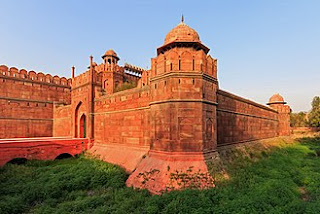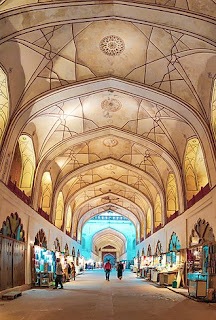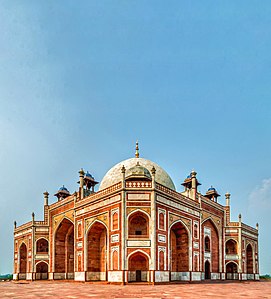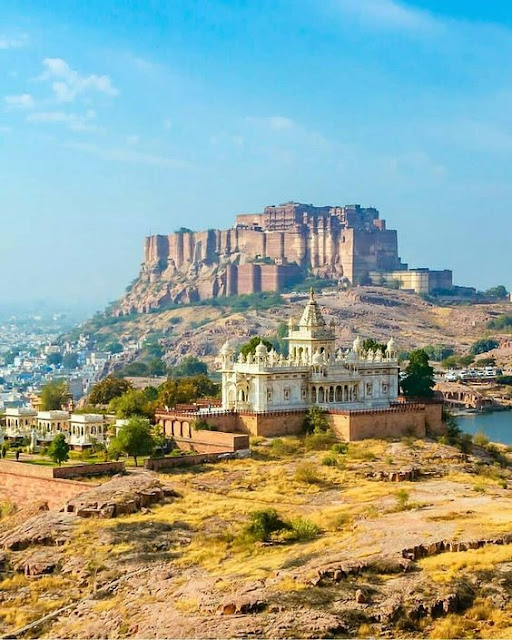Red Fort - Delhi Tourism
Red Fort
The Red Fort is a historic fort in the city of Delhi in India. Every year on the Independence day of India (15 August), the Prime Minister hoists the Indian "tricolor flag" at the main gate of the fort and delivers a nationally broadcast speech from its ramparts.
On 15 August 1947, the first Prime Minister of India Jawaharlal Nehru raised the Indian national flag above the Lahore Gate. On each subsequent Independence Day, the prime minister has raised the flag and given a speech that is broadcast nationally.
History
 According to the Department of Historians and Archeology[according to whom?], the name of the Red Fort was actually Lalkot. Lal Kot, the red coat, which was the first built city of the present Delhi region. The location of Lal Kot is 40 Kilometers from Red Fort. It was founded by the ruler of Tamar ruler Anang Pal in 1060. The evidence states that the Tomar dynasty ruled almost southwards in the South Delhi region, which started from 700AD. Then the Chauhan king, Prithvi Raj Chauhan, took the reign in the twelfth century and named that city and fort Kila Rai Pithora.In 1192, when Prithviraj Chauhan was defeated in the battle of Tarain by Muhammad Ghori, Ghori appointed one of his slaves to take over the rule of this. It was Slave Qutubuddin Aibak who started the Slave dynasty in Delhi Sultanate from 1206. The barrel was taken away with the people of the cast race, which was a stronghold of the people. King Mahalasi was killed. In these sultans, Sultan Qutbuddin Aibak, who initiated the administration, started making Qutub Minar which is considered a symbol of that period. He built Hindu temples and buildings by occupying or demolishing them on priority. This also includes the conversion of Dhruv Stambha built-in Lalkot to Qutub Minar and construction of Kuwait ul Islam Mosque, etc. It was the main residence of the emperors of the Mughal dynasty for nearly 200 years, until 1856. It is located in the center of Delhi and houses several museums. In addition to accommodating the emperors and their households, it was the ceremonial and political center of the Mughal state and the setting for events critically impacting the region.
According to the Department of Historians and Archeology[according to whom?], the name of the Red Fort was actually Lalkot. Lal Kot, the red coat, which was the first built city of the present Delhi region. The location of Lal Kot is 40 Kilometers from Red Fort. It was founded by the ruler of Tamar ruler Anang Pal in 1060. The evidence states that the Tomar dynasty ruled almost southwards in the South Delhi region, which started from 700AD. Then the Chauhan king, Prithvi Raj Chauhan, took the reign in the twelfth century and named that city and fort Kila Rai Pithora.In 1192, when Prithviraj Chauhan was defeated in the battle of Tarain by Muhammad Ghori, Ghori appointed one of his slaves to take over the rule of this. It was Slave Qutubuddin Aibak who started the Slave dynasty in Delhi Sultanate from 1206. The barrel was taken away with the people of the cast race, which was a stronghold of the people. King Mahalasi was killed. In these sultans, Sultan Qutbuddin Aibak, who initiated the administration, started making Qutub Minar which is considered a symbol of that period. He built Hindu temples and buildings by occupying or demolishing them on priority. This also includes the conversion of Dhruv Stambha built-in Lalkot to Qutub Minar and construction of Kuwait ul Islam Mosque, etc. It was the main residence of the emperors of the Mughal dynasty for nearly 200 years, until 1856. It is located in the center of Delhi and houses several museums. In addition to accommodating the emperors and their households, it was the ceremonial and political center of the Mughal state and the setting for events critically impacting the region.
Constructed in 1639 by the fifth Mughal Emperor Shah Jahan as the palace of his fortified capital Shahjahanabad, the Red Fort is named for its massive enclosing walls of red sandstone and is adjacent to the older Salimgarh Fort, built by Islam Shah Suri in 1546 AD. The imperial apartments consist of a row of pavilions, connected by a water channel known as the Stream of Paradise (Nahr-i-Bisht). The fort complex is considered to represent the zenith of Mughal creativity under Shah Jahan,[citation needed] and although the palace was planned according to Islamic prototypes, each pavilion contains architectural elements typical of Mughal buildings that reflect a fusion of Persian, Timurid and Hindu traditions. The Red Fort's innovative architectural style, including its garden design, influenced later buildings and gardens in Delhi, Rajasthan, Punjab, Kashmir, Braj, Rohilkhand and elsewhere.
The fort was plundered of its artwork and jewels during Nadir Shah's invasion of the Mughal Empire in 1747. Most of the fort's precious marble structures were subsequently destroyed by the British following the Revolt of 1857. The fort's defensive walls were largely spared, and the fortress was subsequently used as a garrison. The Red Fort was also the site where the British put the last Mughal Emperor on trial before exiling him to Yangon in 1858.
It was designated a UNESCO World Heritage Site in 2007 as part of the Red Fort Complex.
Etymology
Its English name red fort is a translation of the Hindustani Lal Qila, deriving from its red-sandstone walls. As the residence of the imperial family, the fort was originally known as the "Blessed Fort" (Qila-i-Mubarak). Agra Fort is also known as Lal Qila.
History
Painting of large fort, seen from above
1785 view of the Red Fort from Jharoka in the center and the Moti Masjid on the far right.
View of the Red Fort from the river (by Ghulam Ali Khan, between c. 1852–1854
Painting of gold-and-white palace interior
Bahadur Shah II in the 'Khas Mahal, underneath the Scales of Justice
Emperor Shah Jahan commissioned the construction of the Red Fort on 12 May 1638, when he decided to shift his capital from Agra to Delhi. Originally red and white, the Shah's favorite colors, its design is credited to architect Ustad Ahmad Lahori, who also constructed the Taj Mahal. The fort lies along the Yamuna River, which fed the moats surrounding most of the walls. Construction began in the sacred month of Muharram, on 13 May 1638. Supervised by Shah Jahan, it was completed on 6 April 1648. Unlike other Mughal forts, the Red Fort's boundary walls are asymmetrical to contain the older Salimgarh Fort. The fortress-palace was a focal point of the medieval city of Shahjahanabad, which is present-day Old Delhi. Its planning and aesthetics represent the zenith of Mughal creativity prevailing during Shah Jahan's reign. His successor Aurangzeb added the Pearl Mosque to the emperor's private quarters, constructing barbicans in front of the two main gates to make the entrance to the palace more circuitous.
The administrative and fiscal structure of the Mughal dynasty declined after Aurangzeb, and the 18th century saw a degeneration of the palace. When Jahandar Shah took over the Red Fort in 1712, it had been without an emperor for 30 years. Within a year of beginning his rule, Shah was murdered and replaced by Farrukhsiyar. To raise money, the silver ceiling of the Rang Mahal was replaced by copper during this period. Muhammad Shah, known as 'Rangila' (the Colourful) for his interest in art, took over the Red Fort in 1719. In 1739, Persian emperor Nadir Shah easily defeated the Mughal army, plundering the Red Fort including the Peacock Throne. Nadir Shah returned to Persia after three months, leaving a destroyed city and a weakened Mughal empire to Muhammad Shah. The internal weakness of the Mughal empire made the Mughals titular heads of Delhi, and a 1752 treaty made the Maratha's protectors of the throne at Delhi. The 1758 Maratha conquest of Lahore and Peshawar placed them in conflict with Ahmad Shah Durrani. In 1760, the Marathas removed and melted the silver ceiling of the Diwan-i-Khas to raise funds for the defense of Delhi from the armies of Ahmed Shah Durrani. In 1761, after the Marathas lost the third battle of Panipat, Delhi was raided by Ahmed Shah Durrani. Ten years later, Shah Alam ascended the throne in Delhi with Maratha's support. 10 In 1783 the Sikh Misl Karorisinghia, led by Baghel Singh Dhaliwal, conquered Delhi and the Red Fort briefly. In 1788, a Maratha garrison permanently occupied Red fort and Delhi and ruled on north India for the next two decades until they were usurped by the British East India Company following the Second Anglo-Maratha War in 1803.
During the Second Anglo-Maratha War in 1803, forces of British East India Company defeated Maratha forces in the Battle of Delhi; this ended the Maratha rule of the city and their control of the Red Fort. After the battle, the British took over the administration of Mughal territories and installed a Resident at the Red Fort.11 The last Mughal emperor to occupy the fort, Bahadur Shah II, became a symbol of the 1857 rebellion against the British in which the residents of Shahjahanabad participated.
Despite its position as the seat of Mughal power and its defensive capabilities, the Red Fort was not defended during the 1857 uprising against the British. After the rebellion failed, Bahadur Shah II left the fort on 17 September and was apprehended by British forces. Bahadur Shah Zafar II returned to Red Fort as a prisoner of the British, was tried in 1858 and exiled to Rangoon on 7 October of that year. With the end of Mughal reign, the British sanctioned the systematic plunder of valuables from the fort's palaces. All furniture was removed or destroyed; the harem apartments, servants' quarters and gardens were destroyed, and a line of stone barracks built. Only the marble buildings on the east side at the imperial enclosure escaped complete destruction but were looted and damaged. While the defensive walls and towers were relatively unharmed, more than two-thirds of the inner structures were destroyed by the British. Lord Curzon, Viceroy of India from 1899 to 1905, ordered repairs to the fort including reconstruction of the walls and the restoration of the gardens complete with a watering system.
Most of the jewels and artworks of the Red Fort were looted and stolen during Nadir Shah's invasion of 1747 and again after the failed Indian Rebellion of 1857 against the British. They were eventually sold to private collectors or the British Museum, British Library and the Victoria and Albert Museum. For example, the Koh-i-Noor diamond, the jade wine cup of Shah Jahan and the crown of Bahadur Shah II are all currently located in London. Various requests for restitution have so far been rejected by the British government.
1911 saw the visit of the British king and queen for the Delhi Durbar. In preparation for the visit, some buildings were restored. The Red Fort Archaeological Museum was also moved from the drum house to the Mumtaz Mahal.
The INA trials, also known as the Red Fort Trials, refer to the courts-martial of several officers of the Indian National Army. The first was held between November and December 1945 at the Red Fort.
On 15 August 1947, the first Prime Minister of India Jawaharlal Nehru raised the Indian national flag above the Lahore Gate. On each subsequent Independence Day, the prime minister has raised the flag and given a speech that is broadcast nationally.
After Indian Independence, the site experienced few changes, and the Red Fort continued to be used as a military cantonment. A significant part of the fort remained under Indian Army control until 22 December 2003, when it was given to the Archaeological Survey of India for restoration. In 2009 the Comprehensive Conservation and Management Plan (CCMP), prepared by the Archaeological Survey of India under Supreme Court directions to revitalize the fort, was announced.
Today
Every year on India's Independence Day (15 August), the Prime Minister of India hoists the national flag at the Red Fort and delivers a nationally broadcast speech from its ramparts. The Red Fort, the largest monument in Delhi, is one of its most popular tourist destinations and attracts thousands of visitors every year. A sound and light show describing Mughal history is a tourist attraction in the evenings. The major architectural features are in mixed condition; the extensive water features are dry. Some buildings are in fairly good condition, with their decorative elements undisturbed; in others, the marble inlaid flowers have been removed by looters. The tea house, although not in its historical state, is a working restaurant. The mosque and hamam or public baths are closed to the public, although visitors can peer through their glass windows or marble latticework. Walkways are crumbling, and public toilets are available at the entrance and inside the park.
The Lahore Gate entrance leads to a mall with jewelry and craft stores. There is also a museum of "blood paintings", depicting young 20th-century Indian martyrs and their stories, an archaeological museum and an Indian war memorial museum.
The Red fort appears on the back of the? 500 note of the Mahatma Gandhi New Series of the Indian rupee.
Security
To prevent terrorist attacks, security is especially strict around the Red Fort on the eve of Indian Independence Day. Delhi Police and paramilitary personnel keep watch on neighborhoods around the fort, and National Security Guard sharpshooters are deployed on high-rises near the fort. The airspace around the fort is a designated no-fly zone during the celebration to prevent air attacks, and safe houses exist in nearby areas to which the Prime Minister and other Indian leaders may retreat in the event of an attack.
The fort was the site of a terrorist attack on 22 December 2000, carried out by six Lashkar-e-Toiba members. Two soldiers and a civilian were killed in what the news media described as an attempt to derail India-Pakistan peace talks.
Architecture
Barrel vault structure located past the Lahore Gate acts as a market that was built to satisfy the needs of higher ranked Mughal women, who reside inside the fort
The Red Fort has an area of 254.67 acres (103.06 ha) enclosed by 2.41 kilometers (1.50 mi) of defensive walls, punctuated by turrets and bastions and varying in height from 18 meters (59 ft) on the riverside to 33 meters (108 ft) on the city side. The fort is octagonal, with the north-south axis longer than the east-west axis. The marble, floral decorations and double domes in the fort's buildings exemplify later Mughal architecture.
It showcases a high level of ornamentation, and the Kohinoor diamond was reportedly part of the furnishings. The fort's artwork synthesizes Persian, European and Indian art, resulting in a unique Shahjahani style rich in form, expression, and color. Red Fort is one of the building complexes of India encapsulating a long period of history and its arts. Even before its 1913 commemoration as a monument of national importance, efforts were made to preserve it for posterity.
The Lahori and Delhi Gates was used by the public, and the Khizrabad Gate was for the emperor.[20]:04 The Lahori Gate is the main entrance, leading to a domed shopping area known as the Chatta Chowk (covered bazaar).
Major structures
This section needs additional citations for verification. Please help improve this article by adding citations to reliable sources. Unsourced material may be challenged and removed.
Find sources: "Red Fort" – news · newspapers · books · scholar · JSTOR (May 2017) (Learn how and when to remove this template message)
The most important surviving structures are the walls and ramparts, the main gates, the audience halls and the imperial apartments on the eastern riverbank.
Lahori Gate
Red sandstone gate of the fortress
The Delhi Gate, which is almost identical in appearance to the Lahori Gate
The Lahori Gate is the main gate to the Red Fort, named for its orientation towards the city of Lahore. During Aurangzeb's reign, the beauty of the gate was spoiled by the addition of bastions, which Shahjahan described as "a veil drawn across the face of a beautiful woman".Every Indian Independence Day since 1947, the national flag is unfurled and the Prime Minister makes a speech from its ramparts.
Delhi Gate
The Delhi Gate is the southern public entrance and in layout and appearance similar to the Lahori Gate. Two life-size stone elephants on either side of the gate face each other.
Chatta Chowk
Adjacent to the Lahori Gate is the Chhatta Chowk, where silk, jewelry and other items for the imperial household were sold during the Mughal period. The bazaar leads to an open outer court, where it crosses the large north-south street which originally divided the fort's military functions (to the west) from the palaces (to the east). The southern end of the street is the Delhi Gate.
Naubat Khana
Photo of courtyard shortly after the 1857 uprising
Naubat Khana and the courtyard before its destruction by the British, in an 1858 photograph
The vaulted arcade of the Chhatta Chowk ends in the center of the outer court, which measured 540 by 360 feet (160 m × 110 m). The side arcades and central tank were destroyed after the 1857 rebellion.
In the east wall of the court stands the now-isolated Naubat Khana (also known as Kakkar Khana), the drum house. Music was played daily, at scheduled times and everyone, except royalty, was required to dismount.
Diwan-i-Aam
The Diwan-i-Aam audience hall
The inner main court to which the Kakkar Khana led was 540 feet (160 m) wide and 420 feet (130 m) deep, surrounded by guarded galleries. On the far side is the Diwan-i-Aam, the Public Audience Hall.
The hall's columns and engrailed arches exhibit fine craftsmanship, and the hall was originally decorated with white chunam stucco. In the back in the raised recess, the emperor gave his audience in the marble balcony (jharokha).
The Diwan-i-Aam was also used for state functions. The courtyard (mardana) behind it leads to the imperial apartments.
Nahr-i-Bisht
The imperial apartments consist of a row of pavilions on a raised platform along the eastern edge of the fort, overlooking the Yamuna. The pavilions are connected by a canal, known as the Nahr-i-Bihisht ("Stream of Paradise"), running through the center of each pavilion. Water is drawn from the Yamuna via a tower, the Shahi Burj, at the northeast corner of the fort. The palace is designed to emulate paradise as described in the Quran. In the riverbed below the imperial apartments and connected buildings was a space known as zer-jharokha ("beneath the latticework").
Mumtaz Mahal
The simple white building, with persons on the walkway
Mumtaz Mahal
The two southernmost pavilions of the palace are zenanas (women's quarters), consisting of the Mumtaz Mahal and the larger Rang Mahal. The Mumtaz Mahal houses the Red Fort Archaeological Museum.
Rang Mahal
The Rang Mahal housed the emperor's wives and mistresses. Its name means "Palace of Colours" since it was brightly painted and decorated with a mosaic of mirrors. The central marble pool is fed by the Nahr-i-Bisht.
Khas Mahal
The Khas Mahal was the emperor's apartment. Connected to it is the Muthamman Burj, an octagonal tower where he appeared before the people waiting on the riverbank. This was done by most kings at the time.
Diwan-i-Khas
A gate on the north side of the Diwan-i-Aam leads to the innermost court of the palace (Jalau Khana) and the Diwan-i-Khas (Hall of Private Audience). It is constructed of white marble, inlaid with precious stones. The once-silver ceiling has been restored in wood. François Bernier described seeing the jeweled Peacock Throne here during the 17th century. At either end of the hall, over the two outer arches, is an inscription by Persian poet Amir Khusrow:
If heaven can be on the face of the earth,
It is this, it is this, it is this.
—?"World Heritage Site – Red Fort, Delhi; Diwan-i-Khas". Archaeological Survey of India. Retrieved 15 August 2012.
Many white buildings, with a large grassy area in the foreground
Panoramic view of the imperial enclosure. From left: Moti Masjid, the hammam, Diwan-i-Khas, Khas Mahal and the 'Rang Mahal
Hammam
The hammam was the imperial baths, consisting of three domed rooms floored with white marble.
Baoli
The baoli (step-well) at the Red Fort, Delhi
The baoli or step-well, believed to pre-date Red Fort, is one of the few monuments that were not demolished by the British after the Indian Rebellion of 1857. The chambers within the baoli were converted into a prison. During the Indian National Army Trials (Red Fort Trials) in 1945–46, it housed Indian National Army officers Colonel Shah Nawaz Khan, Colonel Prem Kumar Sahgal, and Colonel Gurbaksh Singh Dhillon. The Red Fort Baoli is uniquely designed with two sets of staircases leading down to the well.
Moti Masjid
West of the hammam is the Moti Masjid, the Pearl Mosque. A later addition, it was built in 1659 as a private mosque for Aurangzeb. It is a small, three-domed mosque carved in white marble, with a three-arched screen leading down to the courtyard.
Hira Mahal
The Hira Mahal is a pavilion on the southern edge of the fort, built under Bahadur Shah II and at the end of the Hayat Baksh garden. The Moti Mahal on the northern edge, a twin building, was destroyed during (or after) the 1857 rebellion.
The low, white building with ornate pillars and arches
Shahi Burj and its pavilion
The Shahi Burj was the emperor's main study of them; its name means "Emperor's Tower", and it originally had a chhatri on top. Heavily damaged, the tower is undergoing reconstruction. In front of it is a marble pavilion added by Aurangzeb.
Hayat Bakhsh Bagh
Square red sandstone building in a dried-out water tank
Red Zafar Mahal and white Sawan/Bhadon pavilion behind it in the Hayat Bakhsh Bagh
The Hayat Bakhsh Bagh is the "Life-Bestowing Garden" in the northeast part of the complex. It features a reservoir, which is now dry, and channels through which the Nahr-i-Bihisht flows. At each end are a white marble pavilion, called the Sawan and Bhadon Pavilions, named after the Hindu months, Sawan and Bhadon. In the center of the reservoir is the red-sandstone Zafar Mahal, added in around 1842 by Bahadur Shah Zafar, and named after him.
Smaller gardens (such as the Mehtab Bagh or Moonlight Garden) existed west of it but were destroyed when the British barracks were built. There are plans to restore the gardens. Beyond these, the road to the north leads to an arched bridge and the Salimgarh Fort.
Princes' quarter
North of the Hayat Bakhsh Bagh and the Shahi Burj is the quarter of the imperial princes. This was used by a member of the Mughal royal family and was largely destroyed by the British forces after the rebellion. One of the palaces was converted into a tea house for the soldiers.





Comments